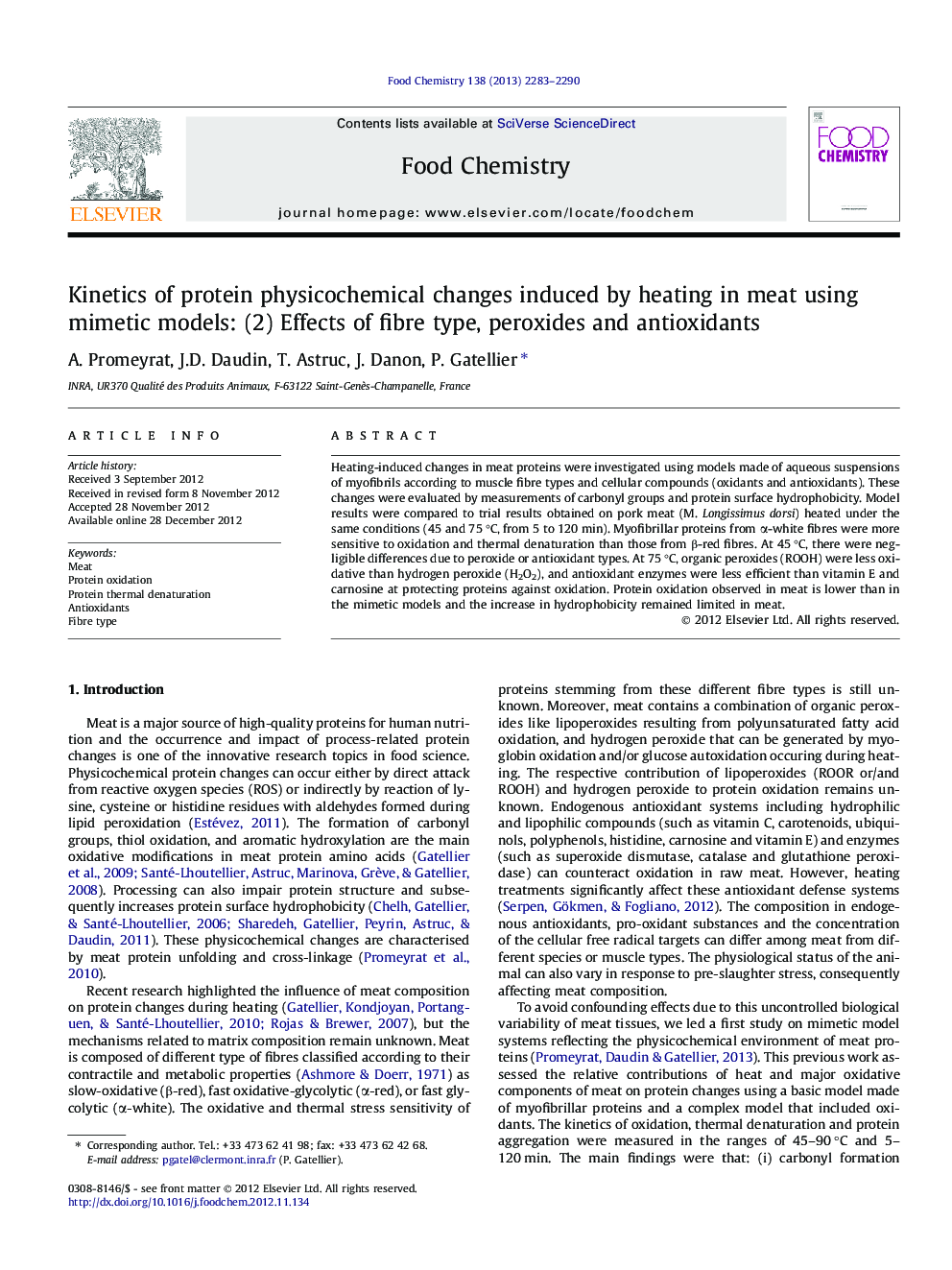| Article ID | Journal | Published Year | Pages | File Type |
|---|---|---|---|---|
| 1185512 | Food Chemistry | 2013 | 8 Pages |
Heating-induced changes in meat proteins were investigated using models made of aqueous suspensions of myofibrils according to muscle fibre types and cellular compounds (oxidants and antioxidants). These changes were evaluated by measurements of carbonyl groups and protein surface hydrophobicity. Model results were compared to trial results obtained on pork meat (M. Longissimus dorsi) heated under the same conditions (45 and 75 °C, from 5 to 120 min). Myofibrillar proteins from α-white fibres were more sensitive to oxidation and thermal denaturation than those from β-red fibres. At 45 °C, there were negligible differences due to peroxide or antioxidant types. At 75 °C, organic peroxides (ROOH) were less oxidative than hydrogen peroxide (H2O2), and antioxidant enzymes were less efficient than vitamin E and carnosine at protecting proteins against oxidation. Protein oxidation observed in meat is lower than in the mimetic models and the increase in hydrophobicity remained limited in meat.
► Proteins from α-white or β-red fibres demonstrate different sensitivities to heat. ► At 45 °C, differences related to peroxide or antioxidant types are negligible. ► At 75 °C, organic peroxides are less oxidative than hydrogen peroxide. ► At 75 °C, antioxidant enzymes are less efficient than vitamin E and carnosine.
